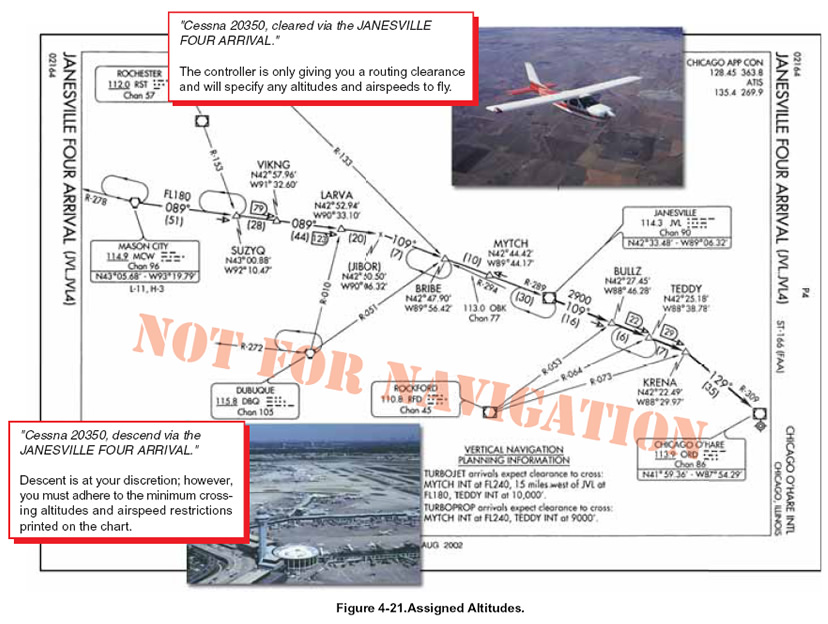 |
|
| INSTRUMENT PROCEDURES HANDBOOK |
|
ALTITUDE Upon your arrival in the terminal area, ATC either clears you to a specific altitude, or they give you a "descend via" clearance that instructs you to follow the altitudes published on the STAR. [Figure 4-21 ] You are not authorized to leave your last assigned altitude unless specifically cleared to do so. If ATC amends the altitude or route to one that is different from the published procedure, the rest of the charted descent procedure is canceled. ATC will assign you any further route, altitude, or airspeed clearances, as necessary. Notice the JANESVILLE FOUR ARRIVAL depicts only one published arrival route, with no named transition routes leading to the basic STAR procedure beginning at the Janesville VOR/DME. Vertical navigation planning information is included for turbojet and turboprop airplanes at the bottom of the chart. Additionally, note that there are several ways to identify the BRIBE reporting point using alternate formation radials, some of which are from off-chart NAVAIDs. ATC may issue a descent clearance that includes a crossing altitude restriction. In the PENNS ONE ARRIVAL, the ATC clearance authorizes you to descend at your discretion, as long as you cross the PENNS Intersection at 6,000 feet MSL. [Figure 4-22]
In the United States, Canada, and many other countries, the common altitude for changing to the standard altimeter setting of 29.92 inches of mercury (or 1013.2 hectopascals or millibars) when climbing to the high altitude structure is 18,000 feet. When descending from high altitude, the altimeter should be changed to the local altimeter setting when passing through FL 180, although in most countries throughout the world the change to or from the standard altimeter setting is not done at the same altitude for each instance. For example, the flight level where you change your altimeter setting to the local altimeter setting is specified by ATC each time you arrive at a specific airport. This information is shown on STAR charts outside the U.S. with the words: TRANS LEVEL: BY ATC. When departing from that same airport (also depicted typically on the STAR chart), the altimeter should be set to the standard setting when passing through 5,000 feet, as an example. This means that altimeter readings when flying above 5,000 feet will actually be flight levels, not feet. This is common for Europe, but very different for pilots experienced with flying in the United States and Canada.
|

